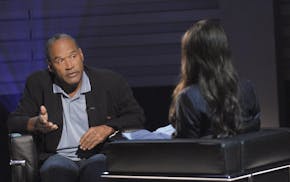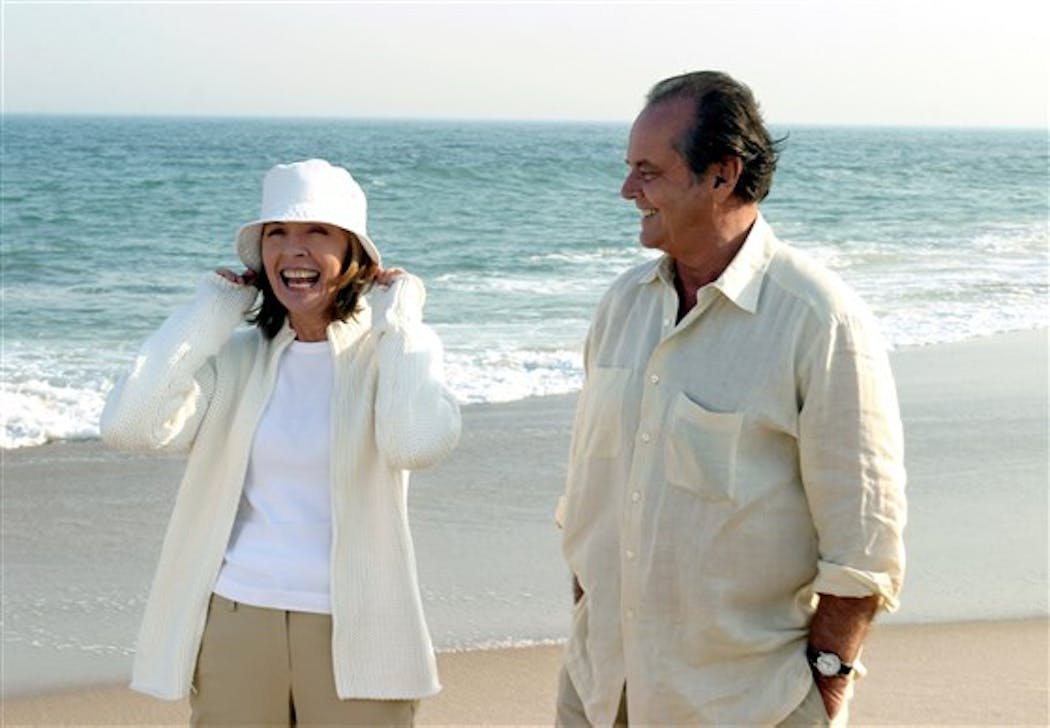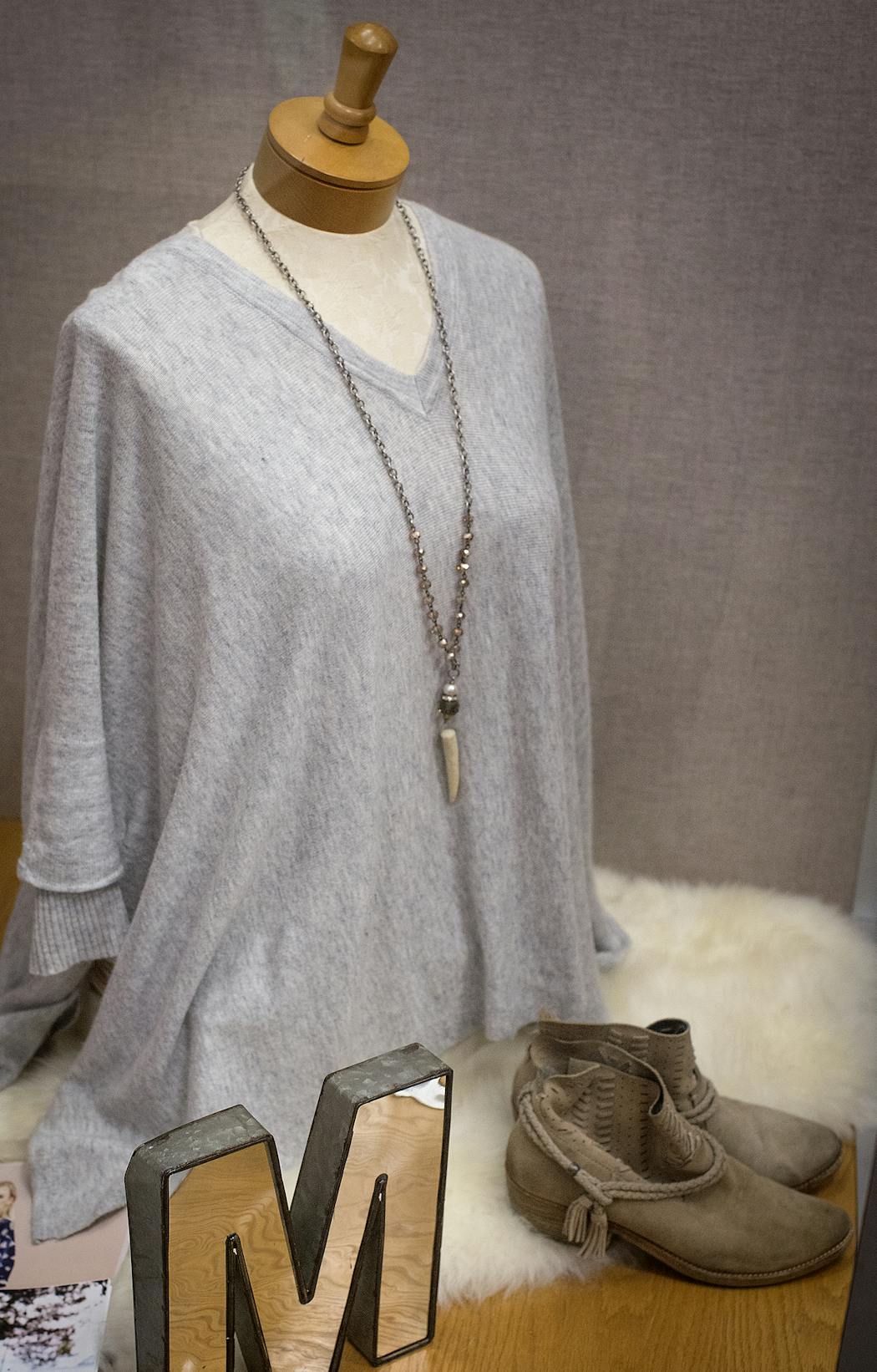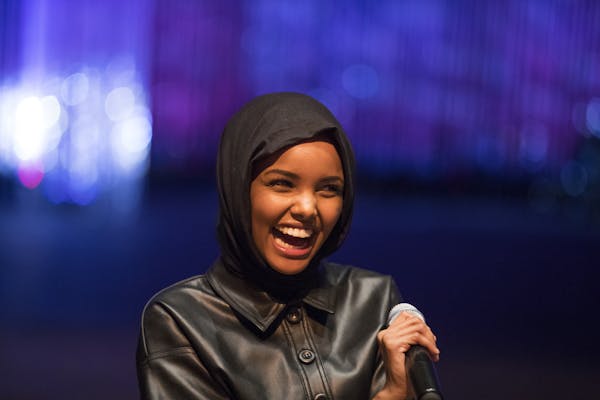Sydney Schumann carefully chose her outfit before making a presentation to her Advanced Creative Design class at St. Catherine University in St. Paul.
The Lakeville college senior wore one of her favorite ensembles — loose floral printed pants with an elasticized waistband topped with an ivory tunic and oversized blue linen blazer.
"I love the pieces and I felt amazingly comfortable," she said.
She dressed to demonstrate the fashion trend she had researched: a newly defined style known as menocore.
Yep, menocore, as in clothes favored by fashionable menopausal — or even postmenopausal — women.
"This look is everywhere," Schumann said. "People might not know the menocore name or realize they're following the trend, but a lot of us have the basics in our closets."
Fashion has long slavishly followed youth culture, but menocore turns that around as young women emulate looks worn by their style-conscious mothers and ultrachic aunts.
The menocore phenomenon is the result of a mashup of societal issues: the #MeToo movement, feminism, body positivity and aging fashion icons.
"I would describe it as relaxed. A lot of natural fibers and drapey tops, flowing sleeves and wider-legged pants," said assistant Prof. Kelly Gage, who teaches trend forecasting and fashion history at St. Kate's. "It's the backlash to the sheath dress; it doesn't show the curves. But it's structured, not baggy. Baggy clothes are sloppy."
Menocore basics include long sweaters and silk cargo pocket pants, personalized with idiosyncratic accessories — funky jewelry, hats, scarves, glasses, shoes that don't pinch.
The term was coined in July 2017 by fashion writer Harling Ross of the website Man Repeller, who describes the look as "inspired by the aesthetic of a middle-aged woman on a low-key beach vacation." A woman who is confident enough to prioritize her own comfort.
Ross points to the classy-but-casual, chic-but-quirky style of middle-aged heroines in movies directed by Nancy Meyers. (Think Diane Keaton in 2003's "Something's Got to Give.")
Comfort and values
Social media had no small role in pushing the menocore look.
Fashionistas around the world have been posting pictures of themselves with #menocore on Twitter, describing their influences as Palm Springs retiree, retired high school art teacher or middle-aged Scandinavian woman.
"Eureka. My style aesthetic has a name!" tweeted one young millennial.
"At the eye doctor and a 60-year-old woman and I are wearing the same outfit," tweeted another. "Welcome to #menocore fashion."
The look seems to appeal to young women who don't want to wait to midlife to ditch skintight styles and gravitate to what they feel good in, no Spanx required.
But Mary Meehan sees some irony in the look.
"Do they not realize that women in menopause dress a certain way because they can't wear anything with a waist anymore?" said Meehan, a veteran trendwatcher, consumer strategist and co-founder of Minneapolis-based Panoramix Global.
While she is put off by the name, Meehan likes what it represents to the young (and youngish) women who embrace their inner Eileen Fisher.
"Fashion is always aspirational, a projection of identity," she said. "This rejection of highly sexualized clothing is for women who are saying, 'I'm going to dress as I please. I choose this for me.' This is very consistent with the equality movement and an authentic way to change the discussion about women's roles and their value."
Ageless appeal
Almost every day, Claire Schierman wears her version of menocore. It's also the theme of her portfolio of original designs. The St. Kate's student recently arrived on campus clad in black and white plaid cropped pants paired with her favorite white top.
"I love the simple silhouette and the contrast — it's both structured and flowy," she said. "It's fashion-forward and fun. I want to look professional, well put together, not sexy."
Fashion merchandising major Maggie Krawczyk spent the summer working at a Northfield clothing store that didn't define its customers by age.
"There's a woman I worked with who's in her 70s and wears things that I would wear — an outfit like this," said Krawczyk, pointing to her soft gray T-shirt tucked into loosefitting linen pants with muted stripes.
"There are less rigid rules about who shops where," added Brooke Bakken, a St. Kate's student from Stillwater. "I'm always in my mom's closet, taking pieces and mixing them with my stuff. She has really cute flowing tops. We rub off on each other — she's in my closet, too."
Bakken said she adopted the menocore look even before she'd heard the name, often pairing an oversize nubby knit sweater with dark denim skinny jeans and slip-on loafers.
"I don't want to be noticed for showing skin," she said. "I don't want to be looked at in a way that's going to make me uncomfortable."
Prof. Gage has heard that more modest clothing is an unconscious reaction to the constant exposure of social media. She also said it may be loosely linked to the widely popularized Scandinavian concept of hygge. The Danish word describes a satisfying mood of coziness and contentment.
"This generation wants to be kind to themselves, not in a selfish way but to do things that are good for their well-being," she said. "They pick clothes that make them feel cared for, that brings psychological and physical comfort and balance in their lives."
But no matter how fashionable menocore becomes, Leslie Ramos said, she won't be picking up drawstring pants or a waistless linen dress.
"I see the trend, but I'm not a fan," said Ramos, 20, a Maplewood apparel design major at St. Kate's.
At 5 feet tall, Ramos thinks she's "too short" to pull off the look, saying billowing garments would "swallow me up."
But that's not the only reason she's opting out of menocore. In her opinion, all that comfort is too much of a good thing.
"I dress up all the time; it makes me feel like I can take on the world," she said. "I'm not productive when I feel like I'm wearing pajamas."
Kevyn Burger is a Minneapolis-based freelance broadcaster and writer.

Executor of O.J. Simpson's estate plans to fight payout to the families of Brown and Goldman




